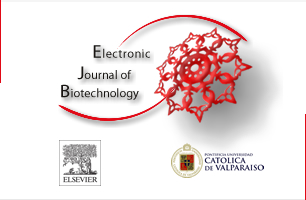Abstract
Background: Nowadays, Leaching-ore bacteria, especially Acidithiobacillus ferrooxidans is widely used to retrieve heavy metals, many researches reflected that extra adding microorganism could promote bioleaching efficiency by different mechanisms, but few of them discussed the interaction between microorganisms and based on growth model. This study aimed to provide theoretical support for the collaborative bioleaching of multiple microorganisms by using the Lotka-Volterra (L-V) model.
Results: This study investigated the interaction of Acidithiobacillus ferrooxidans, Rhizobium phaseoli, and Rhodotorula sp. Results showed that the individual growth of the three microorganisms fit the logistic curves. The environmental capacities of A. ferrooxidans, R. phaseoli, and Rhodotorula sp. were 1.88x109, 3.26x108, and 2.66x108 cells/mL, respectively. Co-bioleaching showed mutualism between A. ferrooxidans and R. phaseoli with mutualism coefficients of α = 1.19 and β = 0.31, respectively. The relationship between A. ferrooxidans and Rhodotorula sp. could be considered as commensalism. The commensalism coefficient γ of the effect of Rhodotorula sp. on A. ferrooxidans was 2.45. The concentrations of A. ferrooxidans and R. phaseoli were 3.59x109 and 1.44x109 cells/mL in group E, respectively, as predicted by the model. The concentrations of A. ferrooxidans and Rhodotorula sp. were 2.38x109 and 2.66x108 cells/mL, respectively. The experimental peak values of the concentrations in microorganism groups E and F were detected on different days, but were quite close to the predicted values.
Conclusion: The relationship among microorganisms during leaching could be described appropriately by Lotka-Volterra model between the initial and peak values. The relationship of A. ferrooxidans and R. phaseoli could be considered as mutualism, whereas, the relationship of A. ferrooxidans and R. phaseoli could be considered as commensalism.Upon acceptance of an article by the journal, authors will be asked to transfer the copyright to Electronic Journal of Biotechnology, which is committed to maintain the electronic access to the journal and to administer a policy of fair control and ensure the widest possible dissemination of the information. The author can use the article for academic purposes, stating clearly the following: "Published in Electronic Journal of Biotechnology at DOI:10.2225/volXX-issueX-fulltext-XX".
The Copyright Transfer Agreement must be submitted as a signed scanned copy to biotec@ucv.cl. All authors must send a copy of this document.
